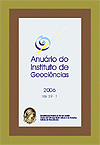Major features of protistan evolution: controversies, problems and a few answers
DOI:
https://doi.org/10.11137/2006_1_55-80Abstract
The major features of protist evolution are fraught with controversies, problems and few answers, especially in early Earth history. In general they are based on molecular data and fossil evidence that respectively provide a scaffold and details of eukaryotic phylogenetic and ecologic histories. 1. Their origin, inferred from molecular sequences, occurred very early (>;3Ga). They are a chimera of different symbiont-derived organelles, including possibly the nucleus. 2. The initial diversification of eukaryotes may have occurred early in geologic time. Six supergroups exist today, each with fossils known from the Proterozoic and Phanerozoic. 3. Sex, considered an important development, may have been inherited from bacteria. 4. Precambrian protists were largely pelagic cyst-bearing taxa, but benthic forms were probably quite diverse and abundant. 5. Protists gave rise to animals long before 600 Ma through the choanoflagellates, for which no fossil record exists. 6. Acritarchs and skeletonized protists radiated in the Cambrian (544-530 my). From then on, they radiated and became extinct at all the major events recorded in the metazoan fossil record. 7. Protists dominated major environments (shelves and reefs) starting with a significant radiation in the Ordovician, followed by extinctions and other radiations until most died out at the end of the Permian. 8. In the Mesozoic, new planktic protozoa and algae appeared and radiated in pelagic environments. 9. Modern protists are important at all trophic levels in the oceans and a huge number terrestrial, parasitic and symbiotic protists must have existed for much of geologic time as well. 10. The future of protists is likely in jeopardy, just like most reefal, benthic, and planktic metazoans. An urgent need to understand the role of protists in modern threatened oceans should be addressed soon.Downloads
Download data is not yet available.
Downloads
Published
2006-01-01
How to Cite
Lipps, J. H. (2006) “Major features of protistan evolution: controversies, problems and a few answers”, Anuário do Instituto de Geociências. Rio de Janeiro, BR, 29(1), pp. 55–80. doi: 10.11137/2006_1_55-80.
Issue
Section
PAPERS
License
This journal is licensed under a Creative Commons — Attribution 4.0 International — CC BY 4.0, which permits use, distribution and reproduction in any medium, provided the original work is properly cited.















